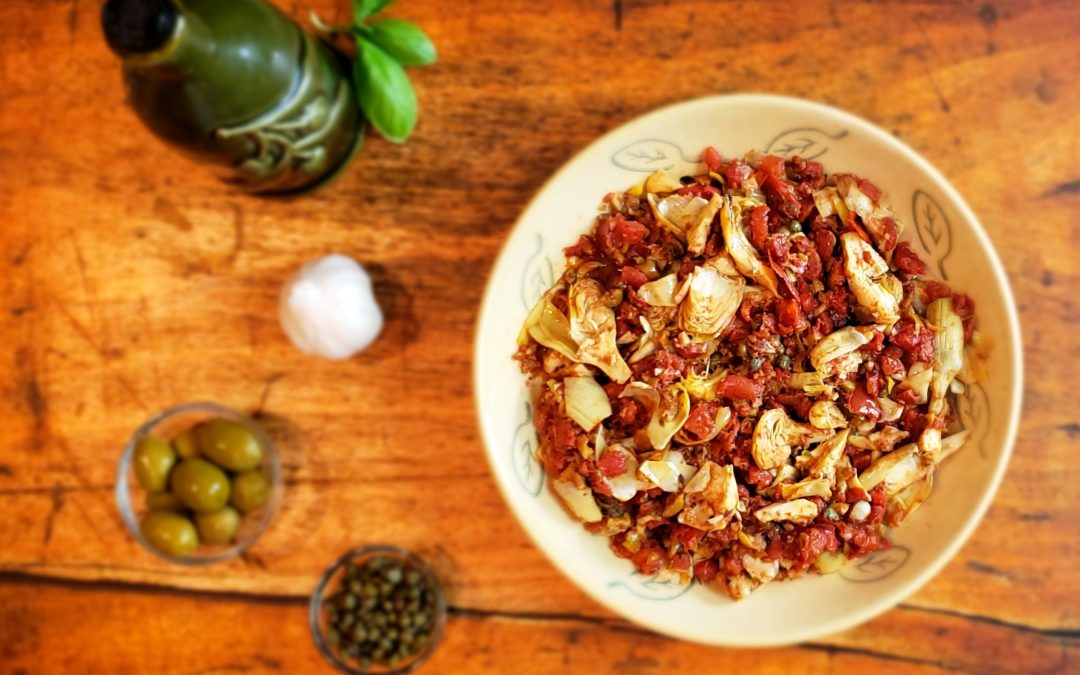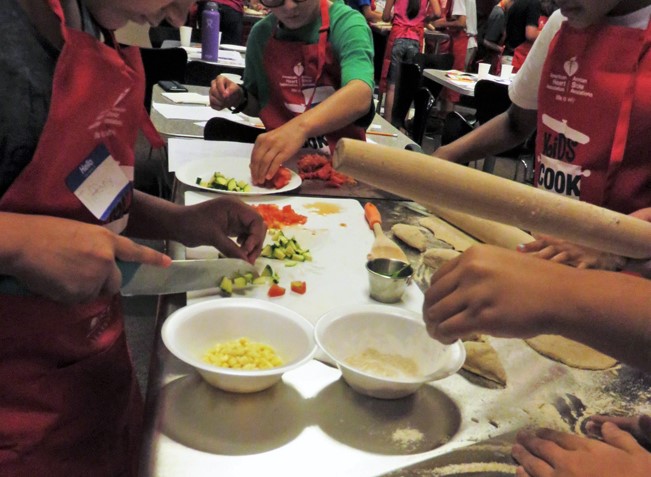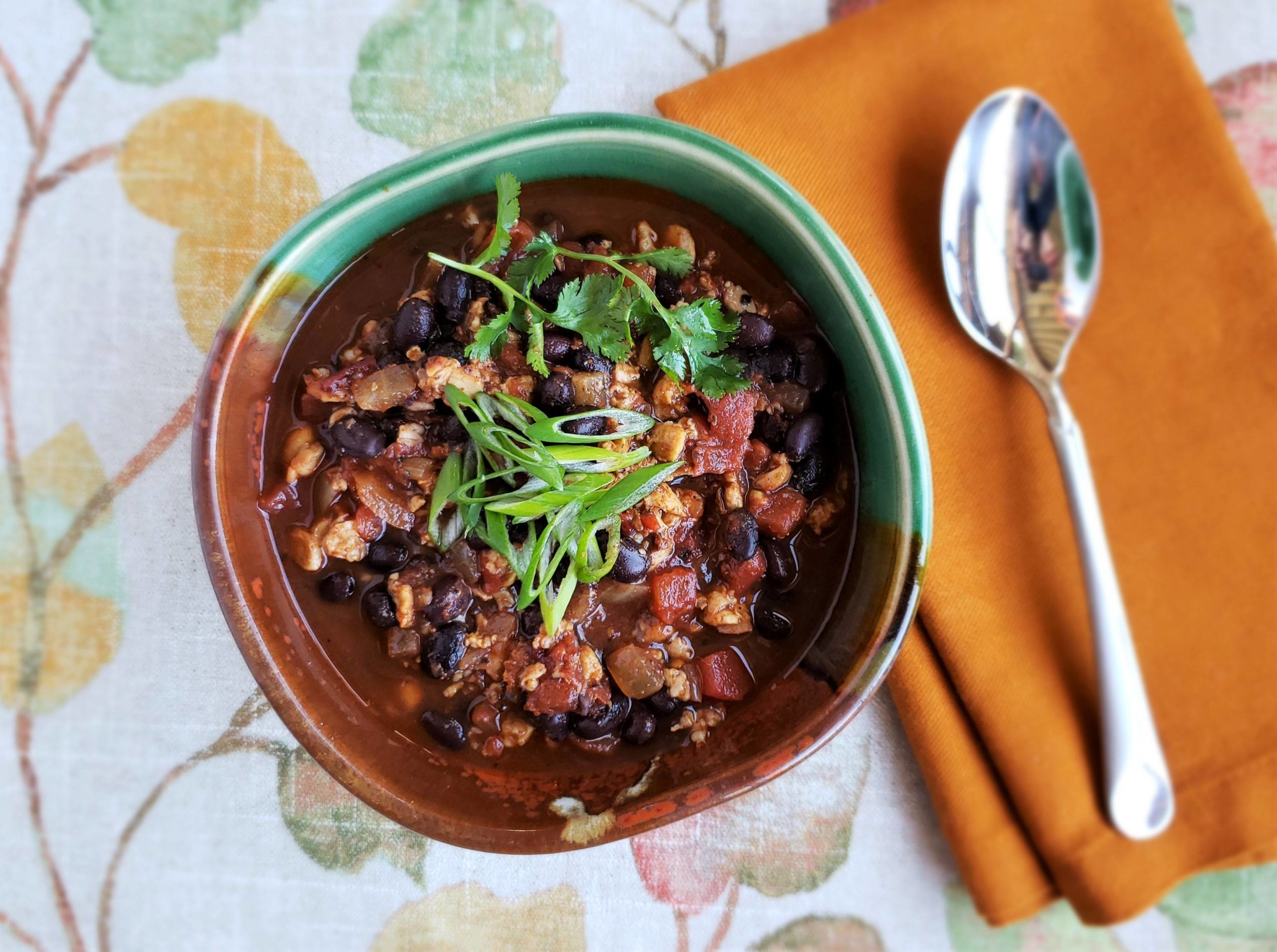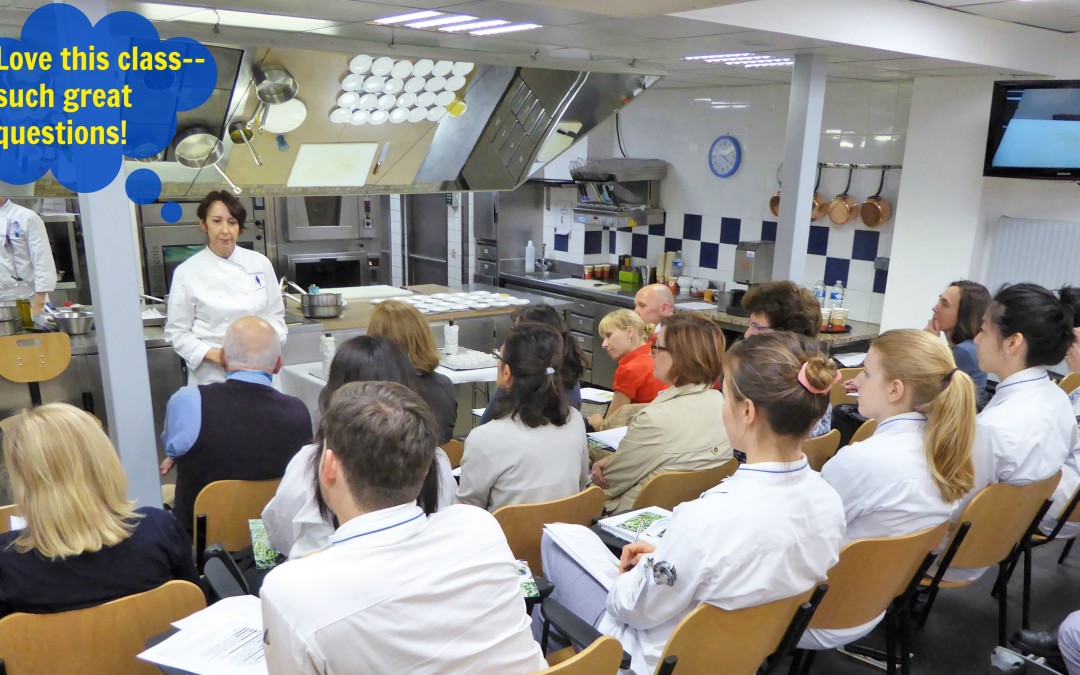Serves 6 as a complete meal with the pasta option A delicious mix of tangy, spicy and savory ingredients makes Puttanesca sauce (sugo alla puttanesca) a meal-time habit that can be made from your pantry. This popular Italian sauce commonly pairs with pasta but...

Pizza as a Path to Veggie-Eating Kids
Pizza as a Path to Veggie-Eating Kids
Pizza Veggie Opportunities
Ask a group of American kids to all agree on meal they like. Pizza, a unifying force in the kid kingdom, wins. However, ask kids to agree on specific vegetables toppings and you’ll hear some “yuck” comments. Unfortunately, most pizzas for kids are made assuming kids have limited palates, particularly for vegetables.
This lack of veggie variety is a missed opportunity for helping kids develop diverse palates for nutrient-rich foods. Fortunately, kids are actually more likely to try new veggie pizza toppings because they already have a positive association with pizza.
Creating Scenarios for Veggie-Eating Kids
Combining a potentially challenging food such as Brussels sprouts with a food kids already like, known as associative conditioning, can increase likeability for that food.
In one “let’s get kids to eat stuff they don’t like study”, the kids who experienced associative conditioning with food pairings were more willing to start eating the “challenging” food by itself and needed less exposures before accepting a new food.
It’s commonly recommended that kids need to try foods about 10 times to help them to develop a palate for the new food. However, in the study by Capaldi-Phillips and Wadhera using associative condition food pairings, kids were more accepting of a new and challenging food. They tried new veggies seven times before accepting them without being paired with other foods.
Cooking & Tasting Veggies
I experimented with introducing veggies to young palates during cooking classes I taught to over 300 kids for the Halle Children’s Heart Museum. The kids, ages 7-12, made pizza’s cousin, flatbread from scratch. They cut vegetables (with chef knifes—not kid knives) and shared feedback about which ones they liked most.
Kids responded well to vegetables that they’d eaten before even though they may have not tried them as a “pizza” topping. For veggies that were new, kids were encouraged to taste them before cooking since vegetables often become sweeter from cooking.
Zucchini, created the most resistance, but kids seemed to be more familiar with them being served soft or even mushy. Feedback about veggies and herbs they liked or were willing to try on pizza included:
- Mushrooms*
- Fresh tomatoes*
- Broccoli*
- Corn*
- Olives
- Basil
- Carrots (consider roasted)
- Red and orange peppers (most kids didn’t realize they were sweet)
- Chiles and red chile flakes (sample of kids were from the spicy Southwest)
*Measurable levels of umami which is a taste component kids love
So consider other unifying foods that can create veggie-eating kids such pasta. Use meals or condiments that kids already like when introducing new veggies. However, this is not stealth nutrition where kids aren’t aware of the actual vegetables being used. Instead, it’s taste education.
Here’s the “adult” flatbread recipe the kids prepared, cooked and ate in under 45 minutes. The flatbread dough itself can be made in under five minutes.
This post is in honor of Kids Eat Right Month™. This is the Academy of Nutrition and Dietetics and the Academy Foundation’s Month-long effort in August to highlight best practices and great information for healthy kids. More info on Kid’s Eat Right Month!

Artichoke Puttanesca–Forget its Saucy Reputation

The Sweet and Meaty Taste Science of Grilled Vegetables
“Let’s grill tonight” translates to “let’s eat meat tonight” in many backyard BBQs. It’s not surprising since grilled meat products create hundreds of complex aroma and flavor compounds. Grilled vegetables create less of these craveable compounds but develop delicious...

Chipotle and Black Bean Tempeh Chili
Making chili should be an easy, homemade treat, but chili competitions and throwdowns can make it feel like it should be Instagram-ble or complex. Typically meat is central to chili, yet this tempeh chili is a contest contender for a comforting, satisfying homecooked...

Michele Redmond
French-trained Chef, Registered Dietitian Nutritionist & Food Enjoyment Activist
It's about Making Food First
Get Eat Well Academy periodic updates on easy ways to choose and cook foods that satisfy your appetite, nurture your body and make eating well a pleasure.





 The pleasure of food, good health and well-being through simple habits for eating well and flexitarian low-key cooking.
The pleasure of food, good health and well-being through simple habits for eating well and flexitarian low-key cooking. 









 Michele conducted a salt taste workshop and discussed how to use salt seasoning to bridge culinary and nutrition science with health and taste enjoyment.
Michele conducted a salt taste workshop and discussed how to use salt seasoning to bridge culinary and nutrition science with health and taste enjoyment.
 seasoning were demonstrated and reviewed as well as tricks for avoiding the most common salt seasoning issues.
seasoning were demonstrated and reviewed as well as tricks for avoiding the most common salt seasoning issues.